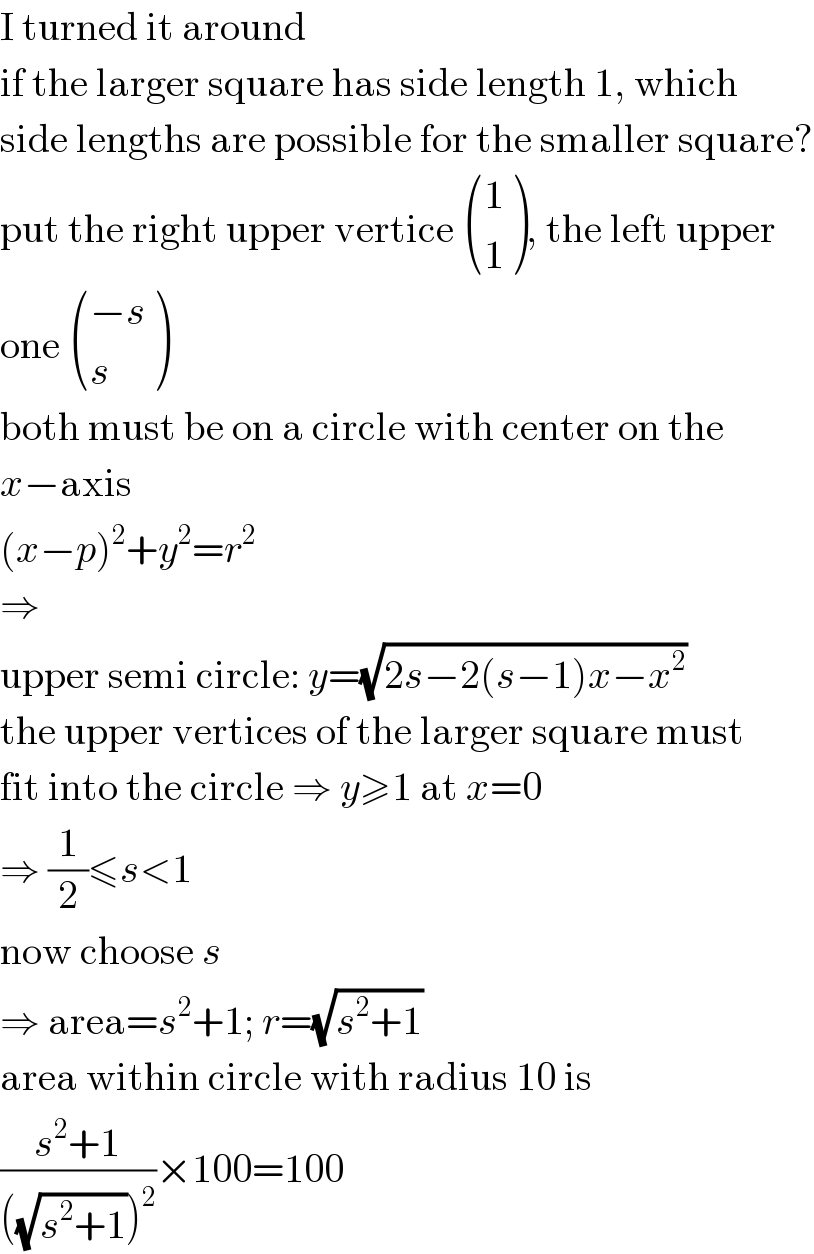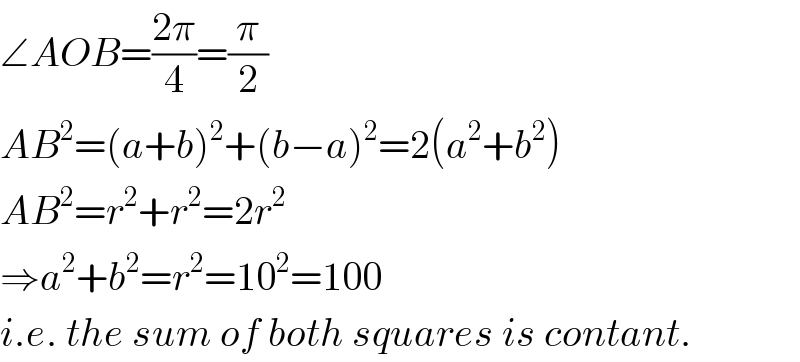
Question and Answers Forum
Question Number 72194 by mr W last updated on 26/Oct/19

Commented by mr W last updated on 26/Oct/19

Answered by MJS last updated on 27/Oct/19

Commented by mr W last updated on 27/Oct/19

Answered by mr W last updated on 27/Oct/19

Commented by mr W last updated on 27/Oct/19

Commented by ajfour last updated on 27/Oct/19

